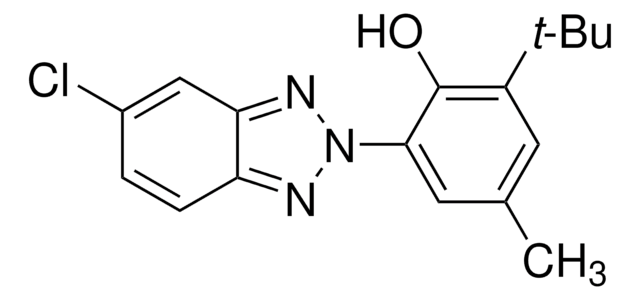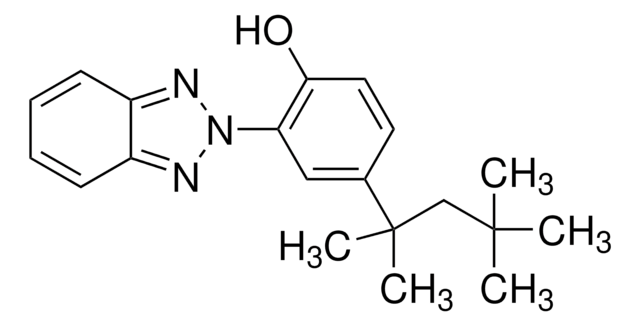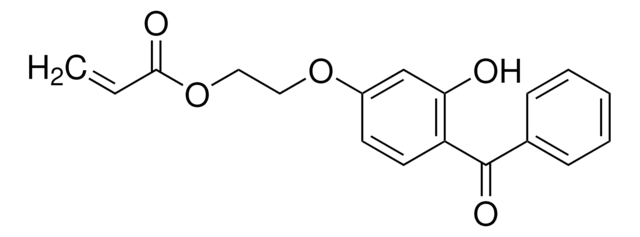559857
2-(2H-Benzotriazol-2-yl)-4-methyl-6-(2-propenyl)phenol
99%
Sinónimos:
2-(3-Allyl-2-hydroxy-5-methylphenyl)-2H-benzotriazole, 2-Allyl-6-(2H-benzotriazol-2-yl)-p-cresol
About This Item
Productos recomendados
Ensayo
99%
mp
98-101 °C (lit.)
temperatura de transición
transition temp >270 °C
solubilidad
H2O: insoluble
densidad
1.3 g/mL at 25 °C (lit.)
cadena SMILES
Cc1cc(CC=C)c(O)c(c1)-n2nc3ccccc3n2
InChI
1S/C16H15N3O/c1-3-6-12-9-11(2)10-15(16(12)20)19-17-13-7-4-5-8-14(13)18-19/h3-5,7-10,20H,1,6H2,2H3
Clave InChI
YKONWVIRECCMQE-UHFFFAOYSA-N
¿Está buscando productos similares? Visita Guía de comparación de productos
Categorías relacionadas
Aplicación
Código de clase de almacenamiento
11 - Combustible Solids
Clase de riesgo para el agua (WGK)
WGK 3
Punto de inflamabilidad (°F)
Not applicable
Punto de inflamabilidad (°C)
Not applicable
Equipo de protección personal
Eyeshields, Gloves, type N95 (US)
Elija entre una de las versiones más recientes:
¿Ya tiene este producto?
Encuentre la documentación para los productos que ha comprado recientemente en la Biblioteca de documentos.
Artículos
The manufacture of monomers for use in ophthalmic applications is driven by the need for higher purity, improved reliability of manufacturing supply, but ultimately by the need for the increased comfort, convenience, and safety of contact lens wearers. Daily wear contact lenses have the potential to fill this need for many customers; however, their widespread use is constrained by higher costs compared to weekly- or monthly-based lenses. New approaches that improve cost structure and result in higher quality raw materials are needed to help make contact lenses more affordable and accelerate growth of the contact lens market.
Nuestro equipo de científicos tiene experiencia en todas las áreas de investigación: Ciencias de la vida, Ciencia de los materiales, Síntesis química, Cromatografía, Analítica y muchas otras.
Póngase en contacto con el Servicio técnico![2-[3-(2H-Benzotriazol-2-il)-4-hidroxifenil]etilmetacrilato 99%](/deepweb/assets/sigmaaldrich/product/structures/208/967/cf29567e-c125-41dc-b80a-66889fa1a679/640/cf29567e-c125-41dc-b80a-66889fa1a679.png)






![2,2′-Methylenebis[6-(2H-benzotriazol-2-yl)-4-(1,1,3,3-tetramethylbutyl)phenol] 99%](/deepweb/assets/sigmaaldrich/product/structures/236/824/ce89085c-b9e1-4ea0-8157-44b6f9466ed6/640/ce89085c-b9e1-4ea0-8157-44b6f9466ed6.png)

